#Gold and Jeweled Necklace Found at Burial Site of Powerful Anglo-Saxon Woman in England
Explore tagged Tumblr posts
Photo
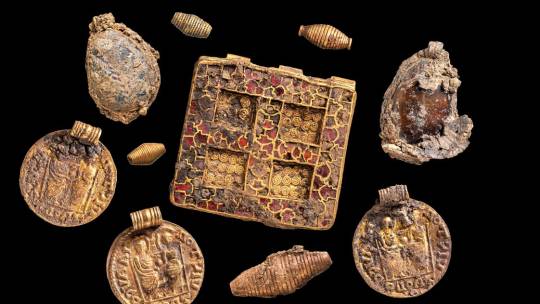

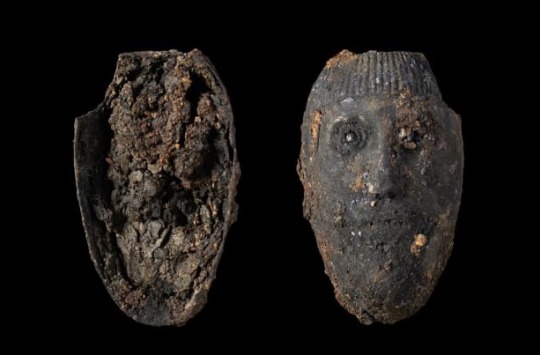
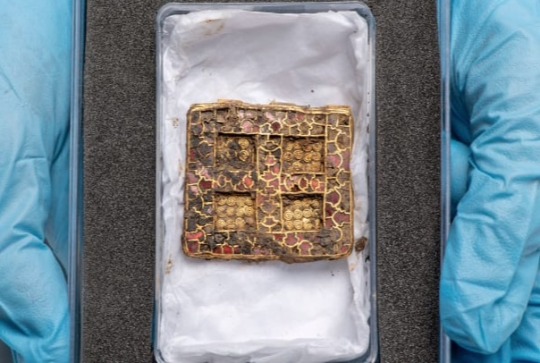
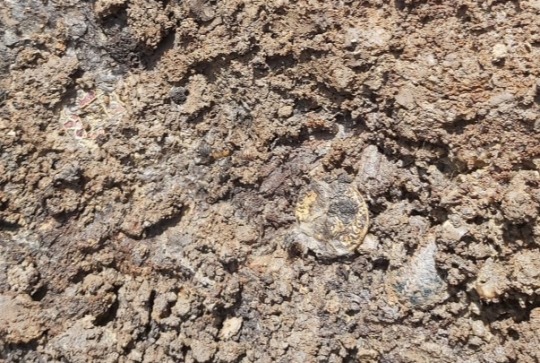
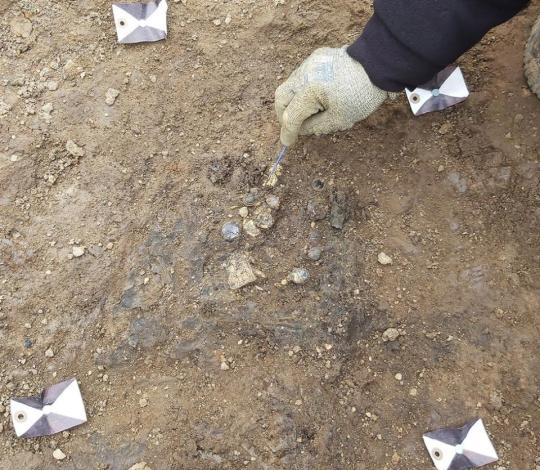
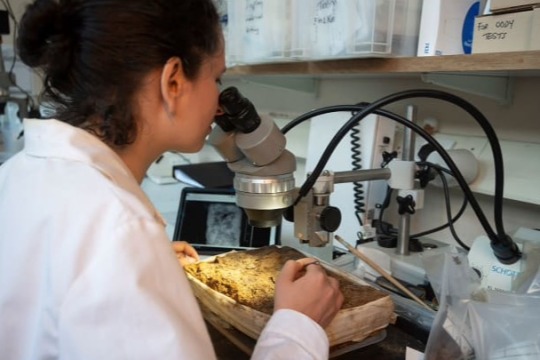
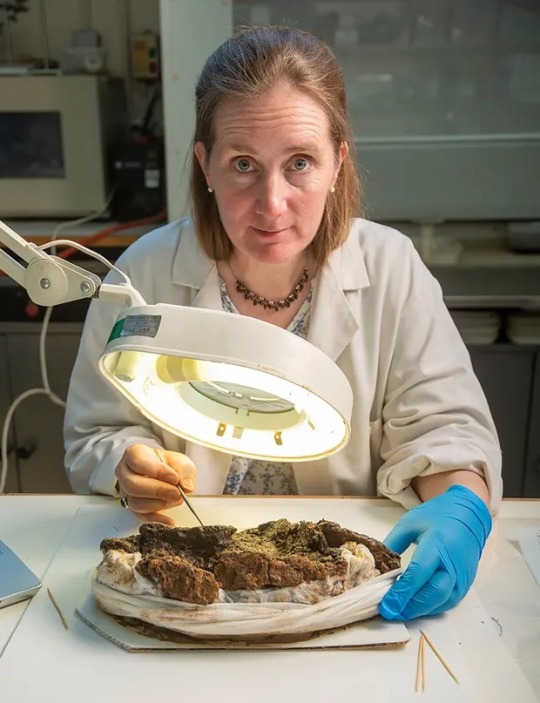
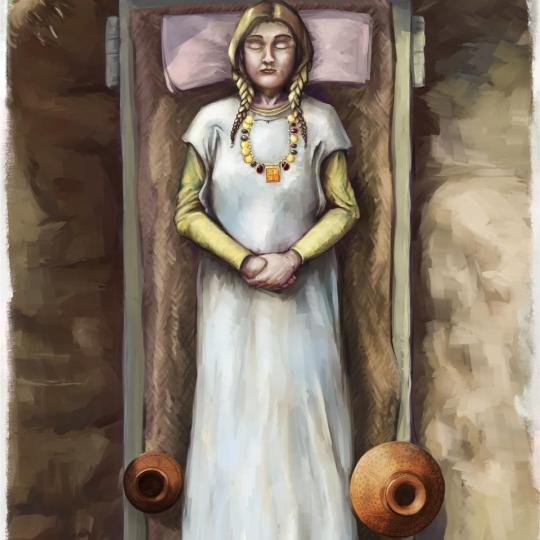
Gold and Jeweled Necklace Found at Burial Site of Powerful Anglo-Saxon Woman in England
Archaeologists have discovered a stunning 1,300-year-old necklace, made of gold, garnets and other semiprecious stones, at an excavation site in central England earmarked for a housing development.
The necklace and other precious objects, called the Harpole Treasure after the local parish in Northamptonshire county where they were unearthed in April, also revealed a powerful role played by some women in Anglo-Saxon England.
The jewelry piece was buried with a woman of high status, who died between 630 AD and 670 AD, according to researchers at the Museum of London Archaeology who unearthed the treasure. The trove also included a relatively large silver cross, two decorated pots and a shallow copper dish.
The Anglo-Saxon bling suggested the woman was powerful in her own right and extremely devout, perhaps an early Christian leader, a princess or an abbess.
The grave site is thought to be the most significant burial from a unique sliver of English history when pagan and Christian beliefs intermingled and women held powerful positions in the early church.
The discovery's importance, the archaeologists said, was of a similar magnitude to that of other monumental Anglo-Saxon treasures unearthed in England, such as Basil Brown's famed find in 1939 at Sutton Hoo, where a warrior king was buried in a ship, and the Staffordshire Hoard of gold and silver artifacts, discovered in 2009 by an amateur metal detectorist in a field in Staffordshire, England.
About a dozen other high-status female burials, known as bed burials, have been discovered elsewhere in England. In some cases, the grave sites included similar necklaces.
Few of these burial sites date back earlier than the 7th century AD, when burials of high-status men were more common, and as Christianity took root, later graves rarely featured valuable objects because being buried with ornate jewelry, such as the necklace, was frowned upon by the early Christian Church, said Lyn Blackmore, a senior finds specialist at MOLA.
"The Harpole Treasure, it's not the richest (bed burial) in terms of the number of artifacts but it is the richest in terms of investment of wealth ... and it has the highest amount of gold and religious symbolism," she said at a news briefing.
X-rays taken of blocks of soil removed from the grave site revealed an ornately decorated but delicate cross cast in silver and mounted on wood. The artifact also had unusual depictions of human faces cast in silver.
Organic matter found in the grave is thought to contain fragments of feathers and textiles like leather, and further study should uncover the nature of the bed burial and whether it had a cover or canopy. The two pots were Frankish in style, Blackmore said, suggesting they came from what is now France or Belgium. The archaeologists hope molecular analysis will allow them to identify the residue in the pots; to date, their analysis has ruled out myrrh.
The skeleton itself was fully decomposed, with the exception of tiny fragments of tooth enamel, but the necklace and other features of the burial convinced the archaeologists that its occupant was female, Blackmore said.
Opulent gold riches
The discovery was made on April 11 but was made public for the first time on Tuesday.
The necklace is the most ostentatious of its type ever to be found in Great Britain, with 30 pendants and beads made of gold, garnets, glass and semiprecious stones strung together along with Roman coins. The striking artifact was found on the penultimate day of an eight-week excavation, said Levente-Bence Balázs, the MOLA site supervisor who first spotted the treasure glinting in the soil.
He was excavating what was thought to be a rubbish pit when he came across the crowns of two teeth, which signaled a burial of some sort. He then saw the rectangular pendant that formed the center of the necklace.
"In 17 years of excavating sites, this was the first time I've found gold. It's not just the artifacts, it's the sheer magnitude of the find," he said.
The excavation work was funded by the house-building company Vistry Group, which said it had waived any rights to the the artifacts that now belong to the state.
he first occupants of the housing development are due to move into their homes in two weeks' time and don't yet know about the treasure that lies beneath their community, said Daniel Oliver, regional technical director at Vistry West Midlands. Nothing has been built on the precise location of the burial, which isn't being made public, he added.
The area where the burial site was found was otherwise unremarkable, with no mounds or other features marking the grave. Archaeologists who worked at the site said they have surveyed the area thoroughly and are confident there is nothing else to find.
Officials at the Museum of London Archaeology said it would take at least two years to study the finds, but hoped the Harpole Treasure would eventually go on public display.
By Katie Hunt.
#Gold and Jeweled Necklace Found at Burial Site of Powerful Anglo-Saxon Woman in England#The Harpole Treasure#Northamptonshire county#ancient tomb#ancient grave#ancient burial#ancient jewelry#ancient artifacts#history#history news#ancient history#ancient culture#ancient civilizations#anglo-saxon#anglo-saxon history#archeology#archeolgst#gold#treasure
53 notes
·
View notes